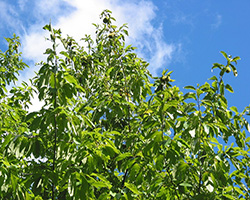Using hyperspectral imaging to evaluate forest health risk
Using hyperspectral imaging to evaluate forest health risk

Managed forest systems are important contributors of terrestrial biomass productivity and carbon storage. Currently, forest systems face a diverse array of stressors of a scale and complexity previously unobserved. Incorporating digital approaches into forest monitoring and management has potential to mediate the negative impact of stressors on forests. Of the data forms potentially generated in digital forestry efforts, hyperspectral data is capable of rapidly generating tree biochemical and physiological status, especially in response to stress. While hyperspectral monitoring is more frequently incorporated into row cropping systems, hyperspectral data has been largely underutilized in forest management practices, distilling information into indexes, such as NDVI (plant greenness), and not focusing on stress-specific responses. In this project, we propose to: 1) determine the ability of hyperspectral data to provide information related to tree status in response to abiotic and biotic stress, 2) assess the reliability of hyperspectral information to scale from leaf, to tree, to stand level measurements, and 3) evaluate the validity of hyperspectral data to characterize stress responses over different spatial scales in varying geographic locations. Our preliminary findings indicate that hyperspectral data can accurately and precisely predict tree responses to environmental variation and disease status, suggesting that combining high-resolution hyperspectral data with high-fidelity reference measurements can provide a framework to monitor stress-specific responses, creating response windows that enable efficient and cost-effective management decisions.
(Funding: NSF CAFS, HTIRC, Digital Forestry)
